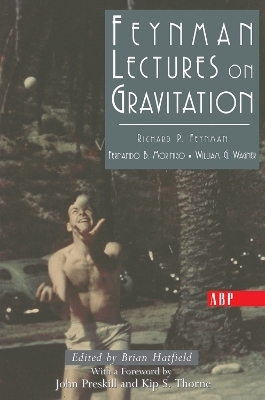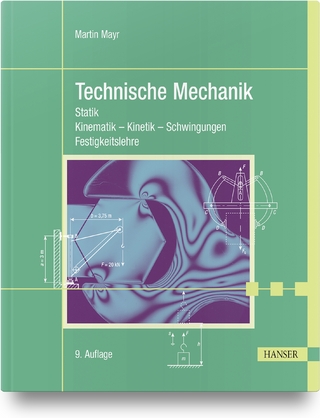
Feynman Lectures On Gravitation
Westview Press Inc (Verlag)
978-0-8133-4038-8 (ISBN)
The Feynman Lectures on Gravitation are based on notes prepared during a course on gravitational physics that Richard Feynman taught at Caltech during the 1962-63 academic year. For several years prior to these lectures, Feynman thought long and hard about the fundamental problems in gravitational physics, yet he published very little. These lectures represent a useful record of his viewpoints and some of his insights into gravity and its application to cosmology, superstars, wormholes, and gravitational waves at that particular time. The lectures also contain a number of fascinating digressions and asides on the foundations of physics and other issues.Characteristically, Feynman took an untraditional non-geometric approach to gravitation and general relativity based on the underlying quantum aspects of gravity. Hence, these lectures contain a unique pedagogical account of the development of Einstein's general theory of relativity as the inevitable result of the demand for a self-consistent theory of a massless spin-2 field (the graviton) coupled to the energy-momentum tensor of matter. This approach also demonstrates the intimate and fundamental connection between gauge invariance and the principle of equivalence.
d matter and nuclear physics, and to theoretical astrophysics. Editor of Perseus' Frontiers in Physics series and former editor of American Physical Society's Reviews of Modern Physics, Dr. Pines is a member of the National Academy of Sciences, the American Philosophical Society, a foreign member of the USSR Academy of Sciences, a fellow of the American Academy of Arts and Sciences, and of the American Association for the Advancement of Science. Dr. Pines has received a number of awards, including the Eugene Feenberg Memorial Medal for Contributions to Many-Body Theory the P.A.M. Dirac Silver Medal for the Advancement of Theoretical Physics and the Friemann Prize in Condensed Matter Physics.
Foreword Quantum Gravity Lecture 1 * A Field Approach to Gravitation * The Characteristics of Gravitational Phenomena * Quantum Effects in Gravitation * On the Philosophical Problems in Quantizing macroscopic Objects * Gravitation as a Consequence of Other Fields Lecture 2 * Postulates of Statistical Mechanics * Difficulties of Speculative Mechanics * The Exchange of One Neutrino * The Exchange of Two Neutrinos Lecture 3 * The Spine of the Graviton * Amplitudes and Polarizations in Electrodynamics, Our Typical Field Theory * Amplitudes for Exchange of a Graviton * Physical Interpretation of the Terms in the Amplitudes * The Lagrangian for the Gravitational Field * The Equations for the Gravitational Field * Definition of Symbols Lecture 4 * The Connection Between the Tensor Rank and the Sign of a Field * The Stress-Energy Tensor for Scalar Matter * Amplitudes for Scattering (Scalar Theory) * Detailed Properties for Plane Waves, Compton Effect * Nonlinear Diagrams for Gravitons * The Classical Equations of Motion of a Gravitating Particle * Orbital Motion of Particle About a Star Lecture 5 * Planetary Orbits and the Precession of Mercury * Time Dilation in a Gravitational Field * Cosmological Effects of the Time Dilation. Machs Principle * Machs Principle in Quantum Mechanics * The Self Energy of the Gravitational Field Lecture 6 * The Bilinear Terms of the Stress-Energy Tensor * Formulation of a Theory Correct to All Orders * The Construction of Invariants with Respect to Infinitesimal Transformations * The Lagrangian of the Theory Correct to All Orders * The Einstein Equation for the Stress-Energy Tensor Lecture 7 * The Principle of Equivalence * Some Consequences of the Principle of Equivalence * Maximum Clock Rates in Gravity Fields * The Proper Time in General Coordinates * The Geometrical Interpretation of the Metric Tensor * Curvatures in Two and Four Dimensions * The Number of Quantities Invariant under General Transformations Lecture 8 * Transformations of Tensor Components in Nonorthogonal Coordinates * The Equations to Determine Invariants of g(( * On the Assumption that Space is Truly Flat * On the Relations Between Different Approaches to Gravity Theory * The Curvatures as Referred to Tangent Spaces * The Curvatures Referred to Arbitrary Coordinates * Properties of the Grand Curvature Tensor Lecture 9 * Modifications of Electrodynamics Required by the Principle of Equivalence * Covariant Derivatives of Tensors * Parallel Displacement of a Vector * The Connection between Curvatures and Matter Lecture 10 * The Field Equations of Gravity * The Action for Classical Particles in a Gravitational Field * The Action for matter Fields in a Gravitational Field Lecture 11 * The Curvature in the Vicinity of a Spherical Star * On the Connection Between matter and the Curvatures * The Scwarzschild Metric, the Field Outside a Spherical Star * The Schwarzschild Singularity * Speculations on the Wormhole Concept * Problems for Theoretical Investigations of the Wormholes Lecture 12 * Problems of Cosmology * Assumptions Leading to Cosmological Models * The Interpretation of the Cosmological Metric * The Measurements of Cosmological Distances * On the Characteristics of a Bounded or Open Universe Lecture 13 * On the Role of the Density of the Universe in Cosmology * On the Possibility of a Nonuniform and Nonspherical Universe * Disappearing Galaxies and Energy Conservation * Machs Principle and Boundary Conditions * Mysteries in the Heavens Lecture 14 * The Problem of Superstars in General Relativity * The Significance of Solutions and their Parameters * Some Numerical Results * Projects and Conjectures for Future Investigations of Superstars Lecture 15 * The Physical Topology of the Schwarzschild Solutions * Particle Orbits in a Schwarzschild Field * On the Future of Geometrodynamics Lecture 16 * The Coupling Between Matter Fields and Gravity * Completion of the Theory: A Simple Example of Gravitational Radiation * Radiation of Gravitons with Particle Decays * Radiation of Gravitons with Particle Scattering * The Sources of Classical Gravitational Waves Bibliography Index
| Erscheint lt. Verlag | 20.6.2002 |
|---|---|
| Reihe/Serie | Frontiers in Physics |
| Sprache | englisch |
| Maße | 152 x 229 mm |
| Gewicht | 408 g |
| Themenwelt | Naturwissenschaften ► Physik / Astronomie ► Mechanik |
| Naturwissenschaften ► Physik / Astronomie ► Quantenphysik | |
| ISBN-10 | 0-8133-4038-1 / 0813340381 |
| ISBN-13 | 978-0-8133-4038-8 / 9780813340388 |
| Zustand | Neuware |
| Haben Sie eine Frage zum Produkt? |
aus dem Bereich


